Coffee cup water powder ratio, water temperature and grinding thickness specified SCAA and Coe cup score table
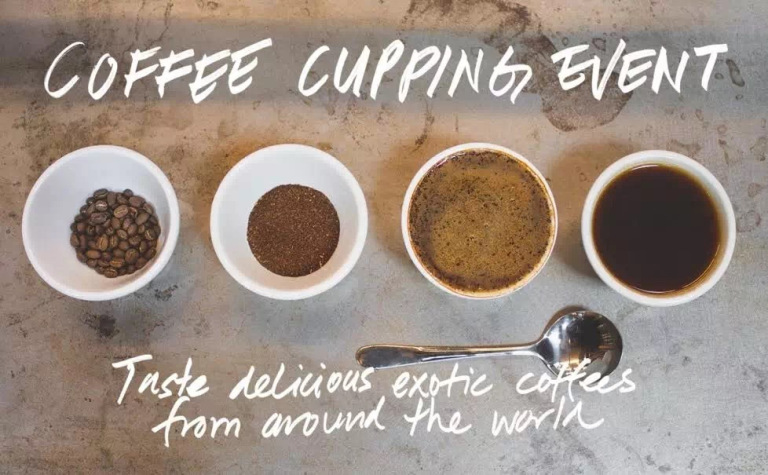
Professional coffee knowledge exchange more coffee bean information please follow the coffee workshop (Wechat official account cafe_style)
Coe Cup meter evaluation items and record key points as well as evaluation instructions
I. the main purpose of the cup test
(1) to explore the original characteristics of coffee, including its advantages and disadvantages
(2) explore the roasting characteristics of coffee and find out the advantages accepted by the market, including the bean blending model.
(3) to decide whether to purchase according to the cup test results, or to make decisions related to procurement.
(4) according to the cup test results, some suggestions on coffee planting and raw bean treatment, preservation and logistics were put forward.
II. Preparation for cup test
(1) suitable environment (quiet environment without pungent or other fragrance)
(2) Cup testing equipment: bean baking facilities, cup testing room, cup testing supplies
(3) Baking cup test samples: bean baking machine, Agtron baking color card, bean grinder
(4) tidying up the cup test environment: the cup test room should be bright and clean, free of strange smell, quiet, comfortable and undistracted.
Third, cup test procedure
(1) baking time: 8 to 12 minutes, no coke, Agtron baking color card # 55-# 65 shall prevail
(2) the ratio of water to coffee powder is 18.18.
(3) regulations on the thickness of grinding: sifted by No. 20 screen or hand-punched
(4) dry incense must be tested within 15 minutes after grinding.
(5) Water quality regulations: total dissolved solids (Total Dissolve Solids) 125 Murray 175 ppm
(6) the temperature of water injection is 93 ℃.
IV. Items of cup test
(1) cleanliness (Clean cup): that is, the sample has no rotten odor and defects.
(2) sweetness (Sweetness): in ripe fruit, the sweetness content can be felt clearly. If it is too ripe or not ripe, the change of sweetness can be felt in the cup.
Take it.
(3) acidity (Acidity): good acidity can be bright and lively, or with fruit acidity or sweetness, while bad acidity is like unripe fruit or even similar to acetic acid or hair.
The sour taste of leaven.
(4) dry and wet incense (Fragrance, Aroma): dry incense refers to the aroma that is ground into powder and smelled before hot water is added, and wet incense refers to the smell after adding hot water.
There are two kinds of wet fragrance before and after breaking dregs, such as flower, berry and caramel A, which are all important factors in the attraction of coffee.
(5) Oral tactile sensation (Mouthfeel): other oral sensations (not taste), sticky matter, greasy sensation and texture, or even poor taste.
The tactile sensation belongs to mouthfeel, such as milk and water, smoothies with flesh.
(VI) Aftertaste: after sipping (spitting coffee or drinking it), it still stays in the mouth and can feel the taste, touch and even residual breath of the nasal cavity. Okay.
Does the smell still exist or disappear? Is there a bad taste or touch?
(7) Balance: all kinds of flavors are coordinated and combined into representative characteristics? Some flavors are too strong? Or less flavor?
(8) Overall: do you like this sample? Are you impressed?
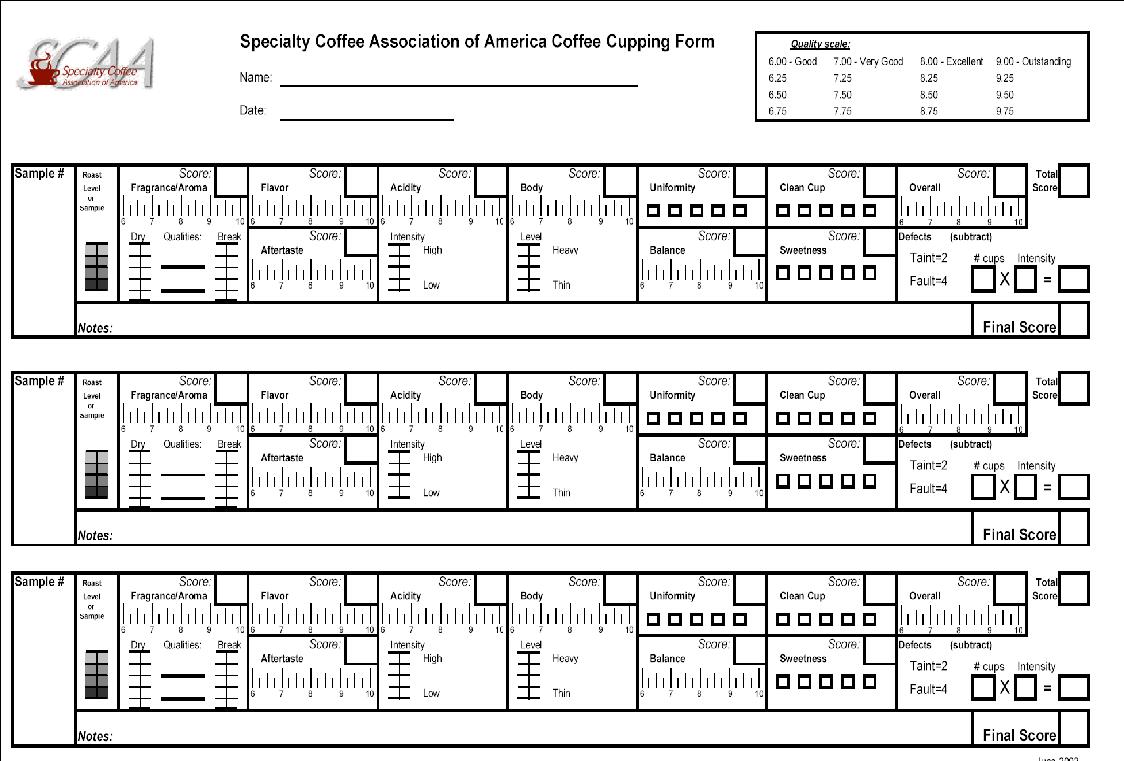
SCAA Cup score Table
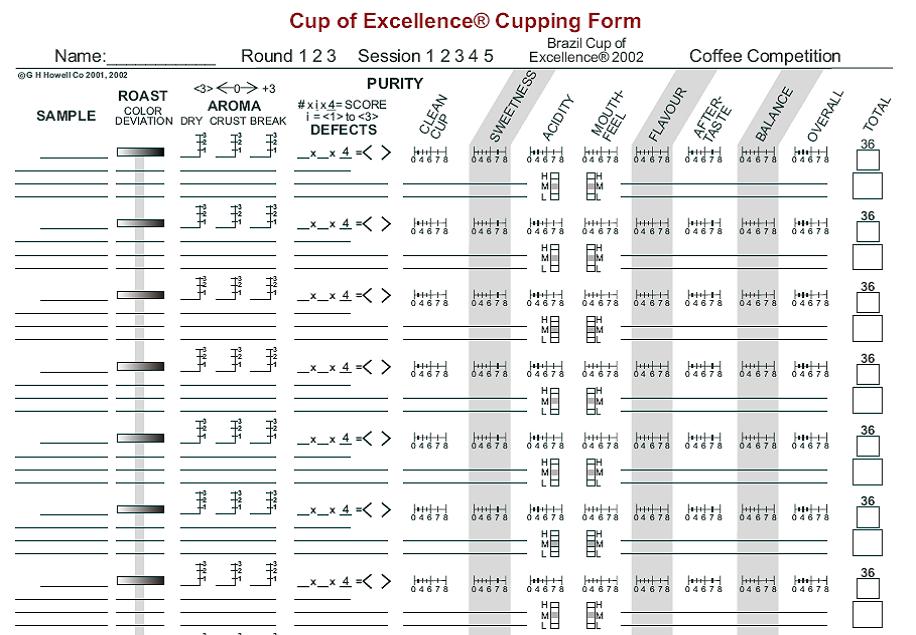
Coe Cup score table
.
Important Notice :
前街咖啡 FrontStreet Coffee has moved to new addredd:
FrontStreet Coffee Address: 315,Donghua East Road,GuangZhou
Tel:020 38364473
- Prev
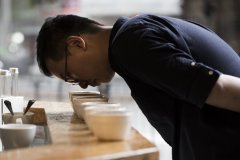
The role of coffee cup tester Why do both import and export of coffee beans need cup testing? Coffee cup testing procedure
Professional coffee knowledge exchange more coffee bean information please follow the coffee workshop (Wechat official account cafe_style) Coe cup evaluation items and record key points as well as the evaluation shows that the third wave of coffee focuses on the flavor of the place of origin, so roasting takes the lead, with coffee roasters stir-frying tasteless raw beans into fragrant and complex ripe beans. But who decides whether the fried coffee beans are qualified or not?
- Next
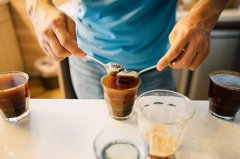
Self-cultivation of professional cup testers-how Qualities of Cupper became a cup tester
Professional coffee knowledge exchange more coffee bean information please follow the coffee workshop (Wechat official account cafe_style) Coe cup meter evaluation items and key points as well as the evaluation shows that although every barista intuitively thinks that he should also be a cup tester, it does not take time and money to be a good cup tester, although you have worked hard to search
Related
- Beginners will see the "Coffee pull flower" guide!
- What is the difference between ice blog purified milk and ordinary milk coffee?
- Why is the Philippines the largest producer of crops in Liberia?
- For coffee extraction, should the fine powder be retained?
- How does extracted espresso fill pressed powder? How much strength does it take to press the powder?
- How to make jasmine cold extract coffee? Is the jasmine + latte good?
- Will this little toy really make the coffee taste better? How does Lily Drip affect coffee extraction?
- Will the action of slapping the filter cup also affect coffee extraction?
- What's the difference between powder-to-water ratio and powder-to-liquid ratio?
- What is the Ethiopian local species? What does it have to do with Heirloom native species?

